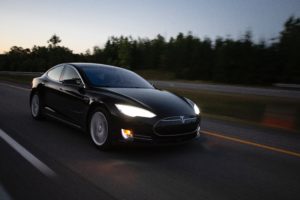Technological improvements and the dropping prices of electric vehicles have helped to usher hundreds of thousands of new models into the hands of consumers over the past two years. All-electric cars now available from Tesla, Chevrolet, Nissan, Volkswagen, and BMW have also helped to broaden drivers’ options with varied body styles, performance specs, and price points.

The shift in the market of electric cars and their resulting increase in competition with traditional gasoline-powered vehicles have triggered criticism from both auto manufacturers and insurance companies about how well these new advances perform in collisions.
To help separate the rumors from the facts, let’s examine these key points about the safety of electric cars:
The Measure of Safety
Ultimately, the measure of safety of any vehicle boils down to the number and type of injuries sustained during crashes. Tesla made news in 2013 about three vehicle fires involving its Model S, and critics and the press were quick to jump to the conclusion that those cars were combustible and unsafe. A closer look at the crash data revealed that all of the fires were the result of drivers running over roadway debris that directly damaged the battery cells, but no one in the vehicles was injured in any of the accidents. In fact, later data supplied by the National Highway Traffic Safety Administration (NHTSA) supported the conclusion that had the same roadway debris struck a vehicle without the battery cells and their aluminum plate protective covering, then the occupants of the vehicle most likely would have been badly injured or even killed by debris piercing the floorboard of the car.
An important measure of safety is how well a vehicle performs in protecting occupants from injuries in side-impact, front-impact and rear impact collisions. Crash test results conducted by the Insurance Institute for Highway Safety (IIHS) and NHTSA show that Tesla’s Model S performed as well as comparable gasoline-powered vehicles in most side-impact collisions, and better than those comparable gas-powered models in front and rear-impact crashes. This data suggests that the Model S is not inherently unsafe.
Flammability Concerns
Lithium-ion (Li-ion) batteries, the power source for all-electric vehicles, are flammable. They contain a liquid electrolyte that stores energy and can overheat and combust with prolonged exposure to the wrong conditions. These power cells are also subject to short-circuiting if they are damaged, and those short-circuits can result in fires if the proper safety precautions are not in place.
However, when compared to the flammability of gasoline, Li-ion batteries pose a far lower risk of fire or explosions. In cases of vehicular fires that were the result of damaged Li-ion batteries, the fire was limited to the area where the batteries were contained before it could be extinguished. In cases of vehicle fires that were the result of spilled gasoline or damaged fuel-delivery components, the fire tended to spread to other parts of the vehicle before it could be contained, and those fires also required more effort from firefighters to extinguish.
While instances of Li-ion battery fires are not common when we consider the millions of batteries on the market, the fires are often trending news headlines because of the prominent roles devices that use these batteries have in our lives.
Laptop computers and mobile phones are commonplace in today’s culture, and burning or exploding batteries are a concern of many who own them. Li-ion battery cells can sometimes generate enough heat, sometimes during their normal operation and at other times due to short-circuit or external damage, to cause a reaction known as “thermal runaway.” However, according to research findings by Jeff Dahn, professor of physics and chemistry at Dalhousie University, only one fire occurs for every 100 million Li-ion batteries on the market when used properly.
Thermal runaway was addressed by designers and engineers of electric cars to help prevent the type of overheating and battery explosions that have been documented with mobile phones and computers. To prevent thermal runaway, the vehicle’s batteries are typically surrounded by a protective cooling shroud filled with chilled liquid coolant from a traditional-style automotive radiator. In the event the batteries do overheat despite their external cooling, batteries in all models of electric vehicles are installed in an array rather than as one large battery pack. These battery clusters are further divided by firewalls that limit the amount of damage each is capable of causing if it were to malfunction.
Safety Advances in Electric Cars
According to NHTSA, the Tesla Model S, which protects its battery array with an additional shielding of an external aluminum plate and has a layer of fire protection between the batteries and the passenger compartment, received the highest possible safety ratings in crash tests.
Other electric vehicle manufacturers’ models scored similarly in regard to passenger safety, but not all had the additional levels of fire safety that are standard with the Tesla Model S. However, the evolution and development of fire safety in electric vehicles is moving at a rapid rate. Volvo, a competitor that is well-known for its safety ranking, is designing its latest electric model with the battery array in a location farther from the passenger compartment, while Toyota and Sakti3, a company owned by Dyson Technologies, are pioneering new solid-state batteries that don’t rely on flammable electrolytes to power electric cars.
In all, NHTSA concluded that the likelihood of passenger injuries in crashes involving electric vehicles is actually slightly lower, meaning that they are safer to passengers, than those involving vehicles with gasoline and diesel engines. However, the overall cost of collision repairs and replacements of electric vehicles averaged far higher than their petroleum-powered counterparts.




